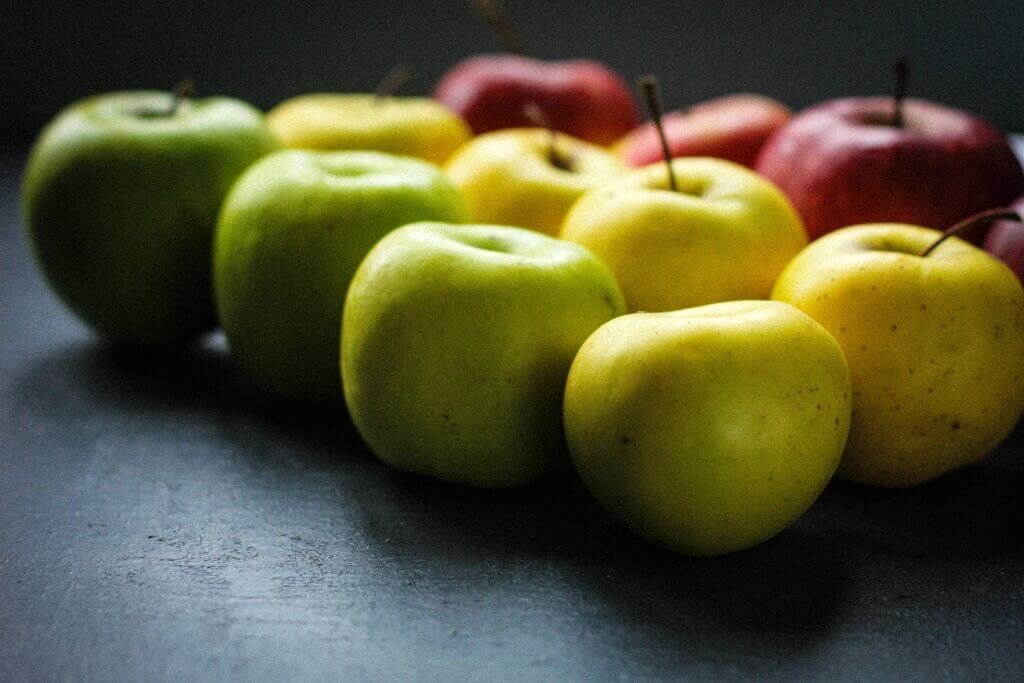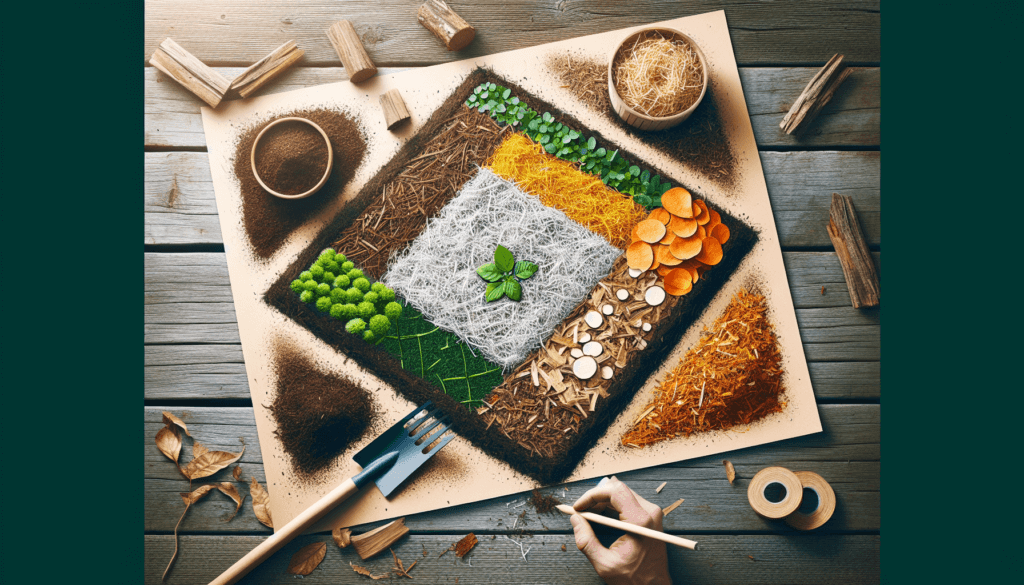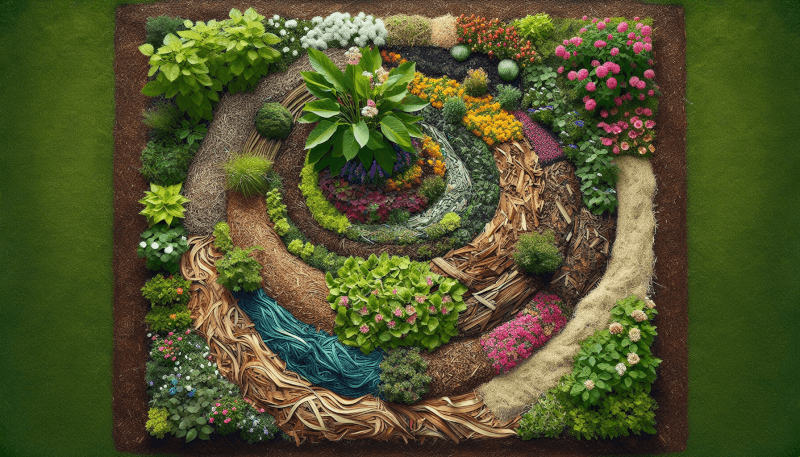Mulching your garden is not only a great way to beautify your space, but it also offers a plethora of benefits for your plants. From preventing weed growth to conserving moisture and regulating soil temperature, mulch can significantly improve the health and vitality of your garden. In this article, we will explore some of the best methods to mulch your garden, providing you with practical tips and guidance to ensure that your plants thrive and flourish. So, grab your gardening gloves and get ready to learn the secrets to achieving a lush and vibrant garden with the best ways to mulch.
Organic Mulch
Grass Clippings
Grass clippings are a great organic mulch option for your garden. They are easily accessible and can be obtained from mowing your lawn. Just make sure that the grass clippings you use are free from pesticides and herbicides. Spread a layer of grass clippings around your plants to retain moisture and suppress weeds. As the grass clippings break down, they will also add valuable nutrients to the soil.
Leaves
Fallen leaves are another excellent organic mulch option. Collect them from your yard or even neighboring areas. Shred the leaves before applying them to your garden to accelerate decomposition. Layer the shredded leaves around your plants to prevent weed growth, retain moisture, and improve soil quality. Use leaves from deciduous trees for better results, as they decompose faster than leaves from evergreen trees.
Straw
Straw is a popular choice for organic mulching. It provides excellent weed suppression and moisture retention. When using straw as mulch, make sure it is free of seeds to avoid introducing unwanted plants to your garden. Spread a 2 to 3-inch layer of straw around your plants, leaving space around the stems to prevent rot. Straw mulch is beneficial for vegetable gardens, flower beds, and shrubs.
Compost
Compost is a versatile organic mulch option that offers numerous benefits to your garden. It improves soil fertility, retains moisture, suppresses weeds, and enhances overall plant health. Apply a layer of compost around your plants, ensuring a depth of at least 2 to 3 inches. If you don’t have compost readily available, you can purchase it from local garden centers or even create your own through composting kitchen scraps and yard waste.
Inorganic Mulch
Gravel
Gravel is a durable and low-maintenance inorganic mulch option for your garden. It is best suited for areas where you want to create a decorative pathway or highlight specific plantings. Gravel allows for excellent drainage and doesn’t decompose, making it a long-lasting choice. However, it doesn’t provide the same soil improvement benefits as organic mulches.
Rubber Mulch
Rubber mulch is made from recycled tires and offers a unique aesthetic appeal to your garden. It is a durable option that doesn’t break down or decompose. Rubber mulch helps retain moisture, suppress weeds, and serves as an excellent insulator for plant roots. However, keep in mind that rubber mulch doesn’t provide any nutrients to the soil and can raise concerns about potential environmental impacts.
Plastic Sheeting
Plastic sheeting, also known as landscape plastic, is often used as a temporary mulching option. It effectively suppresses weeds and retains moisture but doesn’t improve soil quality. Use plastic sheeting in areas where you want to prevent any plant growth, such as creating a new garden bed. Ensure that the plastic is secured properly and has drainage holes if you’re using it around plants that require water.
Landscape Fabric
Landscape fabric is a popular inorganic mulch choice for many gardeners. It allows water and air to reach the soil while blocking weed growth. Landscape fabric comes in different grades, so make sure to choose one that is suitable for your specific garden needs. It is recommended to cover the fabric with an organic mulch layer for aesthetic purposes and to provide additional benefits such as moisture retention and soil improvement.

Natural Mulch Alternatives
Pine Needles
Pine needles, also known as pine straw, make an excellent natural mulch option. They are readily available in areas with pine trees and offer several benefits to your garden. Pine needles create a loose mulch layer that allows for good water penetration while suppressing weed growth. They also break down slowly, providing long-lasting mulch coverage. Pine needles work particularly well for acid-loving plants such as azaleas and rhododendrons.
Wood Chips
Wood chips are a popular choice for natural mulching, especially in larger garden areas. They are made from chipped or shredded tree branches and trunks, providing a sustainable solution for gardeners. Wood chips retain moisture, insulate soil, and gradually add organic matter as they decompose. However, avoid using fresh wood chips as they can deplete the soil of nitrogen during decomposition. Use aged or composted wood chips for best results.
Cocoa Hulls
Cocoa hulls are a unique and aromatic natural mulch derived from the outer shells of cocoa beans. Besides adding a pleasant scent to your garden, cocoa hulls retain moisture, suppress weeds, and break down gradually, enriching the soil with organic matter. However, some precautions are necessary when using cocoa hulls. They can be toxic to dogs if ingested, so it’s essential to keep pets away from the mulched areas.
Shredded Bark
Shredded bark is a versatile and visually appealing natural mulch option. It can be obtained from various types of trees, including cedar, cypress, or pine. Shredded bark mulch helps retain moisture, regulate soil temperature, and suppress weeds. It breaks down slowly, providing long-term benefits to the soil. Choose the type of shredded bark that suits your aesthetic preferences and matches the needs of your plants.
When to Mulch
Spring
Spring is an ideal time to apply mulch to your garden. The soil is still cool, which helps retain moisture and prevent weed growth. Mulching in the spring also provides insulation to plant roots and helps regulate soil temperature as the weather warms up. Apply a layerof mulch around your plants in early spring, making sure the soil is adequately moist before doing so.
Summer
Mulching during the summer months is crucial to protect your plants from heat stress. A layer of mulch acts as a buffer, keeping the soil cooler and retaining moisture. Apply mulch in the summer to conserve water, reduce weed competition, and prevent soil erosion caused by heavy rainfall. Avoid applying mulch too thickly during hot weather, as it may trap excessive heat and suffocate plant roots.
Fall
Fall is an excellent time to mulch your garden, especially to prepare for the colder months ahead. Mulching in the fall helps insulate plant roots, preventing freezing and thawing cycles that can damage them. It also helps retain soil moisture and suppresses weed growth. Apply a layer of mulch around your plants in the fall, after the soil has cooled down, but before the first frost.
Winter
Although mulching in the winter may not be necessary for all regions, it can still offer benefits in colder climates. Winter mulch helps protect plants from extreme temperature fluctuations and frost heaving. Use a thick layer of mulch around the base of plants to provide insulation and prevent moisture loss during the dormant period. Be mindful of removing excess mulch in the spring to avoid promoting mold or pest issues.

How to Mulch
Prepare the Area
Before mulching, it’s essential to prepare the area by removing any existing weeds or undesirable plants. Clear the ground and level it if necessary. Make sure the soil is adequately moist, as mulching dry soil can hinder moisture penetration.
Apply Weed Barrier
To further suppress weed growth, consider applying a weed barrier before mulching. This can be landscaping fabric or cardboard laid directly on the soil surface. Cut holes in the fabric or cardboard to allow for plantings.
Spread Mulch
Once the area is prepared, spread a layer of mulch around your plants. For most applications, a depth of 2 to 3 inches is sufficient. Avoid piling mulch directly against stems or tree trunks, as this can promote rot and pest infestation. Maintain a small gap around the base of plants to allow air circulation.
Maintain Mulch Coverage
Check your mulch periodically and replenish it as needed. Over time, mulch can break down and settle, reducing its effectiveness. Aim to maintain a consistent depth of mulch throughout the growing season. Add additional layers of mulch as necessary to retain moisture and suppress weeds.
Benefits of Mulching
Moisture Retention
One of the primary benefits of mulching is moisture retention. A layer of mulch acts as a barrier, reducing water evaporation from the soil surface. This helps conserve water and ensures plants have a steady supply of moisture, especially during hot and dry periods. Mulching also prevents soil crusting, which can hinder water penetration and root growth.
Weed Suppression
Mulching is an effective method of weed suppression. A layer of mulch creates a physical barrier, preventing sunlight from reaching weed seeds and inhibiting their germination. Additionally, mulch helps smother existing weeds, making them easier to remove. By reducing weed competition, your plants can thrive without having to compete for nutrients and water.
Temperature Regulation
Mulch plays a crucial role in regulating soil temperature. In hotter months, mulch helps keep the soil cooler by blocking out excess heat from the sun. Conversely, in colder months, mulch acts as an insulating layer, protecting plant roots from freezing temperatures. This temperature regulation promotes optimal plant growth and reduces stress on the plants.
Soil Improvement
Mulching can contribute to soil improvement over time. Organic mulches, such as compost or shredded bark, break down gradually, adding organic matter to the soil. This organic matter enhances soil structure, promotes beneficial microbial activity, and improves nutrient availability. Mulching also prevents soil erosion, protecting the topsoil from being washed away during heavy rainfalls.

Choosing the Right Mulch
Consider Plant Needs
Different plants have varying requirements when it comes to mulching. Some prefer acidic conditions, while others thrive in neutral or alkaline soil. Research the needs of your specific plants and choose a mulch that aligns with those requirements. For instance, pine needles are excellent for acid-loving plants, while wood chips work well for a wide range of plants.
Climate Factors
Consider the climate in your region when selecting mulch. Certain mulches, like rubber or plastic, can retain heat and may not be suitable for hot climates. On the other hand, in colder regions, using a thicker layer of mulch or winter-specific mulching materials can help protect plants from freezing temperatures. Tailor your mulching choices to suit the climate conditions in your area.
Aesthetic Preference
Mulch plays a significant role in the overall aesthetic appeal of your garden. Consider the color, texture, and appearance of different mulch options. For a natural, earthy look, shredded bark or wood chips are great choices. If you prefer a more uniform and modern look, rubber or plastic mulch might be more suitable. Select a mulch that complements your landscaping design and personal preferences.
Cost Considerations
Mulching materials can vary significantly in cost. Organic mulch options, such as grass clippings or leaves, are typically the least expensive since they can be obtained for free. Inorganic mulches like rubber or plastic tend to be more costly upfront but may require less frequent replacement. Evaluate your budget when choosing mulch and consider the long-term benefits and maintenance requirements.
Mulching Techniques for Different Garden Types
Vegetable Gardens
Mulching vegetable gardens offers several benefits, including moisture retention, weed suppression, and soil improvement. Use organic mulches such as straw or compost for vegetable gardens. Apply a 2 to 3-inch layer of mulch, leaving space around the plant stems. Renew the mulch layer as needed throughout the growing season to maintain optimal plant health.
Flower Beds
Mulching flower beds not only enhances the visual appeal of your garden but also provides numerous benefits. Organic mulches like wood chips or shredded bark work well for flower beds. Apply a layer of mulch around the plants, ensuring a depth of 2 to 3 inches. Take care not to bury the flowers’ stems or crowns to prevent rotting.
Shrubs and Trees
Mulching around shrubs and trees is essential for their overall health and establishment. Apply a layer of mulch extending at least 3 feet in diameter from the base of the plant. Keep the mulch layer at a depth of 2 to 4 inches, making sure not to pile it against the trunk. Organic mulches, like shredded bark or compost, provide the best benefits for shrubs and trees.
Container Gardens
Container gardens require a different mulching approach. Use decorative mulch, such as gravel or stones, to enhance the visual appeal of your containers. Mulching containers helps retain moisture, suppress weed growth, and regulate soil temperature. Avoid covering the drainage holes with mulch and only apply a thin layer to prevent oversaturation of the soil.

Common Mulching Mistakes to Avoid
Overmulching
Applying too much mulch can do more harm than good. Overmulching can prevent water from reaching plant roots, suffocate the soil, and promote disease or pest infestation. Follow the recommended depth guidelines for each type of mulch and avoid excessive mulch buildup around plant stems or tree trunks.
Volcano Mulching
Volcano mulching refers to the practice of heaping mulch against the base of a tree, resembling a volcanic cone. This can lead to moisture buildup, root rot, and the growth of opportunistic pests and diseases. Maintain a small gap between the mulch and the tree trunk to allow proper air circulation. The mulch should resemble a donut shape, with the center around the tree trunk remaining clear.
Using Uncomposted Materials
Avoid using uncomposted materials as mulch, especially fresh grass clippings or green plant trimmings. Uncomposted materials can release excess nitrogen during decomposition, potentially harming plant roots. If using grass clippings or plant trimmings, ensure they are thoroughly dried and composted before using them as mulch.
Applying Mulch Too Late
It’s important to apply mulch at the appropriate time. Waiting too long in the growing season to mulch can allow weeds to establish and compete with your plants. Apply mulch early in the growing season, ensuring the soil is adequately moist and warm. This will give your plants the best chance to thrive.
Maintaining Mulch
Monitor Moisture Levels
Regularly check the moisture levels of your mulch to ensure proper plant hydration. Mulch should retain moisture without becoming waterlogged. Deeply water the area when you notice the mulch starting to dry out, especially during periods of heat or drought. Avoid overwatering, as excessive moisture can lead to root rot or fungal diseases.
Check for Weed Growth
Although mulch helps suppress weed growth, some weeds may still find their way through. Routinely inspect your mulched areas and promptly remove any weeds that emerge. Regular weeding will prevent weeds from competing with your plants for essential nutrients and water.
Avoid Compaction
Prevent soil compaction around your plants by avoiding heavy foot traffic on mulched areas. Compacted soil hinders root growth and reduces water infiltration. Use stepping stones or designated pathways to access different areas of your garden and minimize soil compaction.
Refresh Mulch Annually
Mulch breaks down over time, losing its effectiveness. Refresh your mulch annually by adding a new layer to maintain the recommended depth. Before adding fresh mulch, remove any remaining remnants of the previous year’s mulch. This will prevent excess buildup and ensure optimal weed suppression and moisture retention.
In conclusion, mulching is a valuable practice for maintaining a healthy and vibrant garden. It offers numerous benefits, including moisture retention, weed suppression, temperature regulation, and soil improvement. Whether you choose organic or inorganic mulch, it’s important to consider plant needs, climate factors, aesthetic preferences, and cost considerations. Follow the proper mulching techniques for different garden types and avoid common mistakes such as overmulching or volcano mulching. With regular maintenance and annual refreshment of your mulch, you can enjoy a thriving and beautiful garden all year round.



